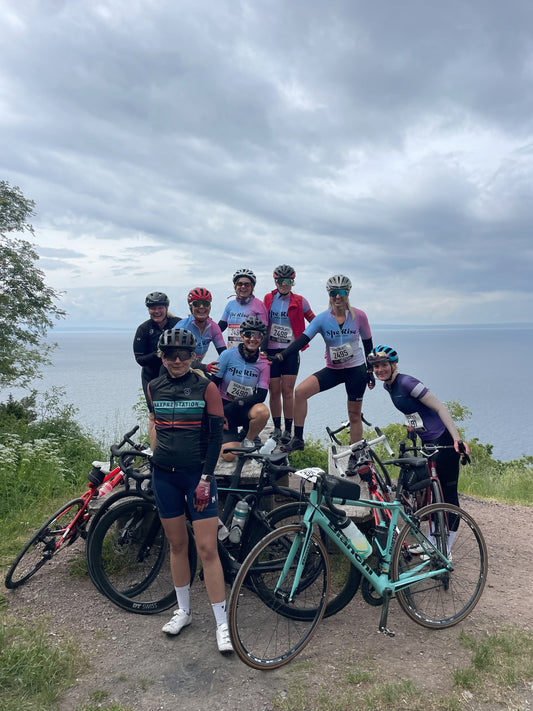Ultrarunning is running that extends beyond the classic marathon distance of 42.2 kilometers. It can be anything from 50 km to multi-day races of over 200 km. What makes ultrarunning unique is not only the distance, but also the environments, races often take place in tough terrain, in mountains, forests and deserts, where endurance, brainpower and mental strength are put to the test.
The positives of ultrarunning
One of the great benefits of ultrarunning is the sense of adventure and freedom. Many ultraruns take you away from the city's asphalt and into nature. It's not uncommon to run through magical landscapes, over mountain peaks and through forests where the chirping of birds and the wind in the trees are your only company.
Additionally, ultrarunning is not always about running fast, but rather about reaching the finish line. Many walk uphill, stop and eat well at stations, and enjoy the journey rather than just chasing the clock. This creates a sense of community among participants and a culture where encouraging each other is as important as achieving.
Physically, ultrarunning builds both endurance and strength, and mentally it strengthens your ability to deal with adversity and discomfort both on and off the run.
Challenges and risks
However, ultrarunning is not for everyone, and there are several tough challenges. The biggest one is the wear and tear on the body. Many runners have problems with overuse injuries such as runner's knee, periosteum inflammation or stress fractures. Running in difficult terrain also increases the risk of sprains and falls.
Another challenge is energy balance. It’s easy to underestimate how much energy and fluid is needed during an ultra-race. Many beginners suffer from stomach problems, dehydration or “crash”, when the body simply runs out of energy.
The mental part is also demanding. Long hours in solitude and fatigue can take a toll on the psyche, and you need to be prepared to deal with doubt and exhaustion.
Who is ultra running suitable for?
Ultrarunning is suitable for those who already have a base of running training and enjoy long distances. It doesn't require you to be super fast, but you should have a love for being out in nature for long periods of time and be able to handle both physical and mental exertion.
You also need to be curious and have patience, building endurance and adapting your body to ultra-distances takes time.
How do you start?
Start by building your base. If you run 3-4 times a week and are comfortable running longer sessions of 20-30 km, you have a good foundation. Then you can gradually increase your long sessions and practice being outside for several hours.
Also train in varied terrain and learn about energy and fluid intake during long sessions. One tip is to start with a 50 km race or a “time-based” race where you run as far as you can in, for example, 6 or 12 hours.
Respect the distance. Rest properly and take care of your body. Ultrarunning can give you memories and experiences for a lifetime, but it requires humility before both nature and your own capacity.

Equipment and nutrition for ultrarunning
Equipment
When running an ultra, the right equipment is essential to cope with the distance and environment. Here are some things to keep in mind:
-
Running backpack or vest : Many ultra-marathons require you to carry fluids, energy, extra clothing and sometimes first aid. A running vest with a hydration system and space for small items is standard.
-
Shoes adapted for terrain : Trail shoes with good grip are needed if you run in forests, mountains or other technical terrain. Also consider cushioning and fit - comfort is key.
-
Layered clothing : The weather can change quickly. Wear functional clothing in layers, with a light rain jacket that you can throw on when needed.
-
Headlamp : If you are running evening or night runs, a headlamp is essential.
-
Vaseline or similar : To avoid chafing on longer distances.
Diet and energy
Replenishment of energy and hydration is key to staying strong. During an ultra race, you often burn thousands of calories, so you need to eat and drink regularly.
-
Energy : Test during training what energy sources work for your stomach. Some people prefer energy gels, while others prefer to eat bars, nuts or even small sandwiches. During longer races it is common to also eat "real food" such as soup, potatoes or rice.
-
Fluids and electrolytes : Water is not always enough. Over several hours, you also need to replenish electrolytes (salt and minerals) to avoid cramps and imbalances in the body.
-
Eat before you get hungry : A rule of thumb in ultrarunning is to start eating and drinking early and regularly to keep energy levels stable.
Ultra races in Sweden
1. Black River Run (Västerås)
- Distance: 50 km, 100 km, 100 miles
- Fun thing: Walking through central Västerås with a crowd and cheering the whole way. Many people run with headlamps all night long.
- Atmosphere: Folk festival with local support!
2. Österlen Spring Trail Ultra
- Distance: 60 km, 100 km
- Fun thing: Walk along Skåne's beautiful coast and national parks. A deluxe outdoor experience.
- Atmosphere: Close to nature and cozy.
3. Bergslagsleden Ultra
- Distance: 46 km / 84 km
- Fun fact: Almost entirely trail running, wild and challenging. Feels like an adventure.
- Atmosphere: Cozy, small-scale – you get to know other runners.
4. Kullamannen Ultra (Skåne)
- Distance: 22 km, 100 km, 100 miles
- Fun fact: The courses are called “Dead Sea” and “Heaven, Sea & Hell.” Steep, difficult, epic.
- Atmosphere: Raw, dramatic and with cult status.
International ultra races
5. Marathon des Sables (Morocco)
- Distance: 250 km in 6 days
- Fun fact: You run in the desert and carry everything yourself – food, sleeping bag, clothes.
- Atmosphere: Extreme, but magical community.
6. The Barkley Marathons (USA)
- Distance: ~160 km (no one knows exactly)
- Fun fact: Super secret and absurdly difficult. Participants get a number by sending in an essay. Almost no one can do it.
- Atmosphere: Cult race and legendary.
7. Big Dog's Backyard Ultra (US and Global)
- Distance: Unlimited – you run 6.7 km every hour until only one remains.
- Fun thing: Psychological exhaustion! But at the same time very social and different.
- Mood: Excitement, madness and slow decay
8. Ultra Trail du Mont Blanc (UTMB, France/Italy/Switzerland)
- Distance: 171 km + 10,000 altitude meters
- Fun thing: Walking around Mont Blanc, through three countries, with a huge crowd and alpine drama.
- Mood: The Champions League of running.



